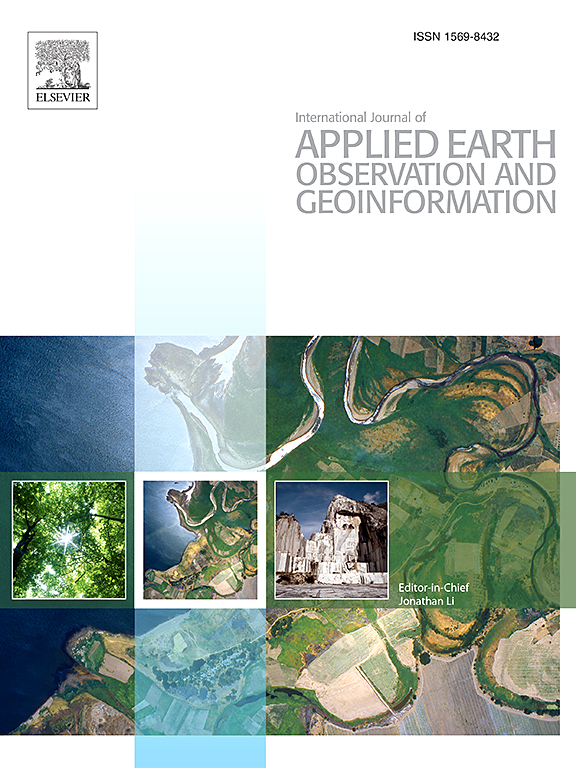A SAR wave-enhanced method combining denoising and texture enhancement for bathymetric inversion
IF 7.6
Q1 REMOTE SENSING
International journal of applied earth observation and geoinformation : ITC journal
Pub Date : 2025-04-11
DOI:10.1016/j.jag.2025.104520
引用次数: 0
Abstract
The wave phenomena in SAR images are able to provide water depth information. SAR ocean images are often characterized by unclear wave texture and strong speckle noise, which will hinder the bathymetric inversion. Denoising and texture enhancement are two strategies to improve image quality. However, noise reduction may blur textures, while texture enhancement may amplify noise. To address this, we propose a wave texture enhancement method to balance noise reduction and texture preservation. First, an adaptive total variation bounded Hessian method removes noises from SAR ocean images while preserving texture. Next, an improved Frankle-McCann Retinex method enhances ocean wave features in the denoised image without adding noises. Finally, the resulting image is used for wave-based bathymetric inversion experiments conducted at Car Nicobar Island, Chowra Island, and Dongdao Island, covering depths up to 40 m. The proposed method improved bathymetric accuracy, reducing mean absolute error (MAE) by up to 4.69 m and mean relative error (MRE) by up to 18 %. In addition, the proposed method has a positive effect on the estimation of wavelength and period parameters. Experimental results show that blurred ocean surfaces in SAR images significantly affect bathymetric inversion. Thus, wave enhancement is an important step prior to performing bathymetric inversion.
一种结合去噪和纹理增强的SAR波增强方法用于水深反演
合成孔径雷达图像中的波浪现象能够提供水深信息。SAR 海洋图像通常具有波浪纹理不清晰和斑点噪声强的特点,这将阻碍水深反演。去噪和纹理增强是提高图像质量的两种策略。然而,降噪可能会模糊纹理,而纹理增强则可能会放大噪声。针对这一问题,我们提出了一种波浪纹理增强方法,以平衡降噪和纹理保护。首先,一种自适应总变异有界黑森方法可以去除合成孔径雷达海洋图像中的噪声,同时保留纹理。接着,一种改进的 Frankle-McCann Retinex 方法在不增加噪声的情况下增强了去噪图像中的海洋波浪特征。最后,将得到的图像用于在 Car Nicobar 岛、Chowra 岛和东岛进行的基于波浪的测深反演实验,覆盖深度达 40 米。此外,拟议方法对波长和周期参数的估算也有积极作用。实验结果表明,合成孔径雷达图像中模糊的海洋表面会严重影响测深反演。因此,波浪增强是进行测深反演之前的一个重要步骤。
本文章由计算机程序翻译,如有差异,请以英文原文为准。
求助全文
约1分钟内获得全文
求助全文
来源期刊

International journal of applied earth observation and geoinformation : ITC journal
Global and Planetary Change, Management, Monitoring, Policy and Law, Earth-Surface Processes, Computers in Earth Sciences
CiteScore
12.00
自引率
0.00%
发文量
0
审稿时长
77 days
期刊介绍:
The International Journal of Applied Earth Observation and Geoinformation publishes original papers that utilize earth observation data for natural resource and environmental inventory and management. These data primarily originate from remote sensing platforms, including satellites and aircraft, supplemented by surface and subsurface measurements. Addressing natural resources such as forests, agricultural land, soils, and water, as well as environmental concerns like biodiversity, land degradation, and hazards, the journal explores conceptual and data-driven approaches. It covers geoinformation themes like capturing, databasing, visualization, interpretation, data quality, and spatial uncertainty.
 求助内容:
求助内容: 应助结果提醒方式:
应助结果提醒方式:


